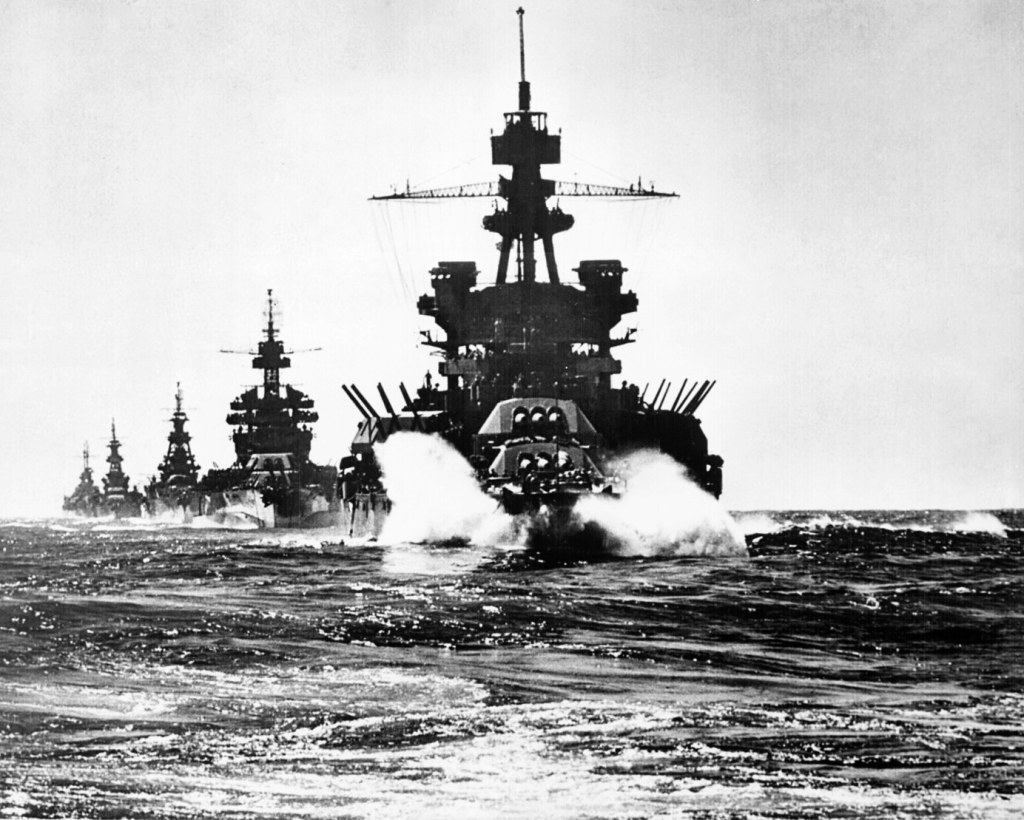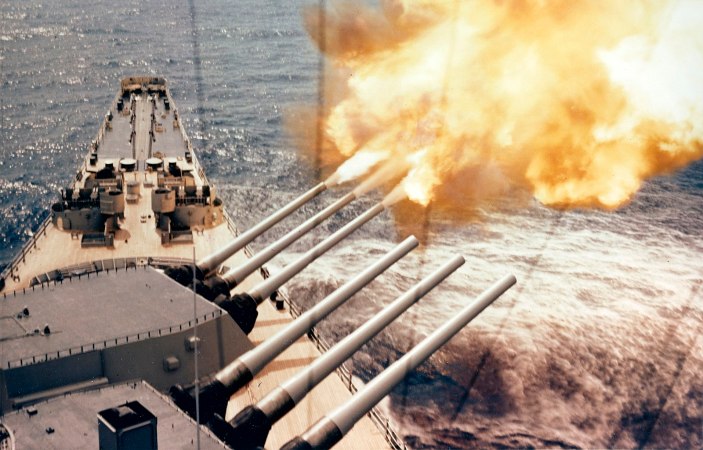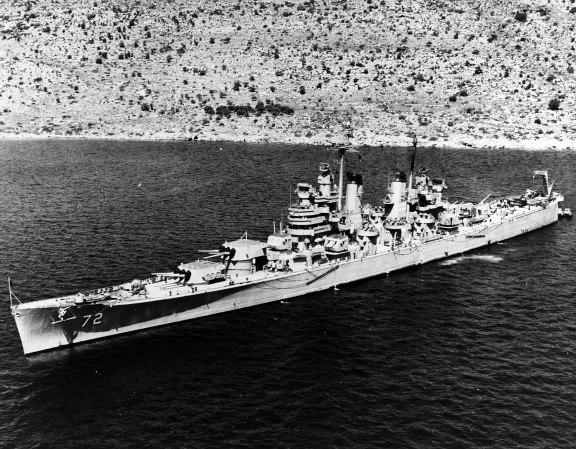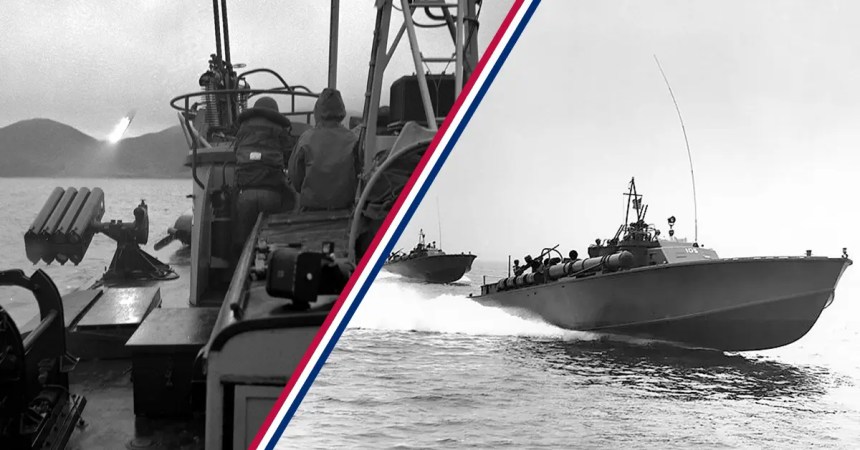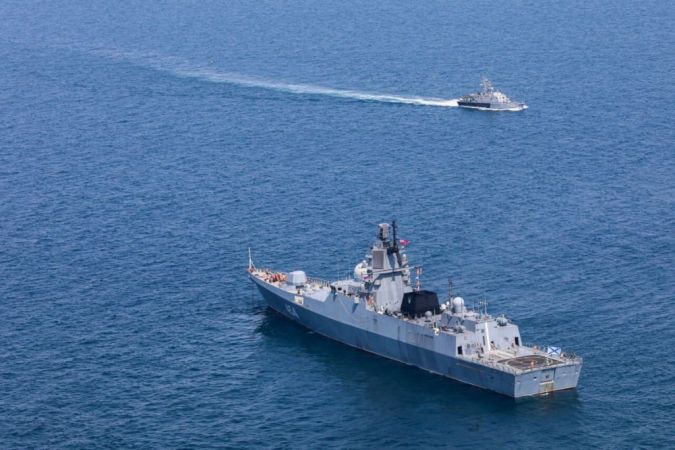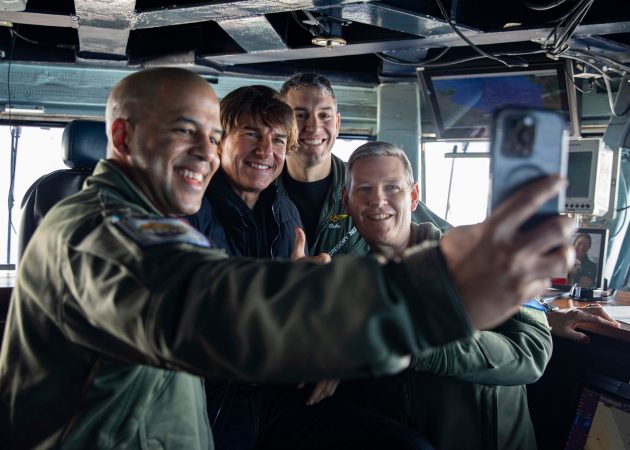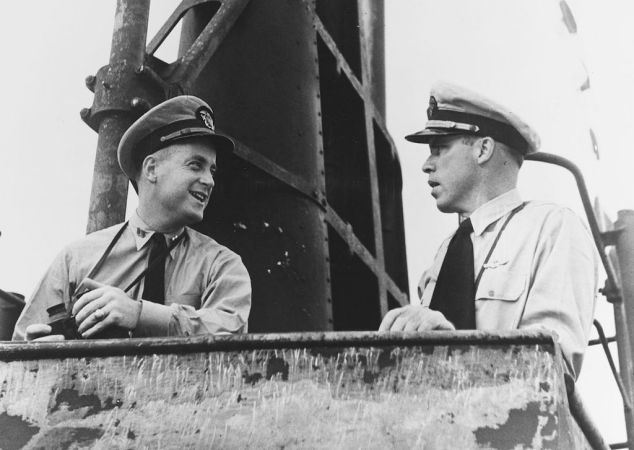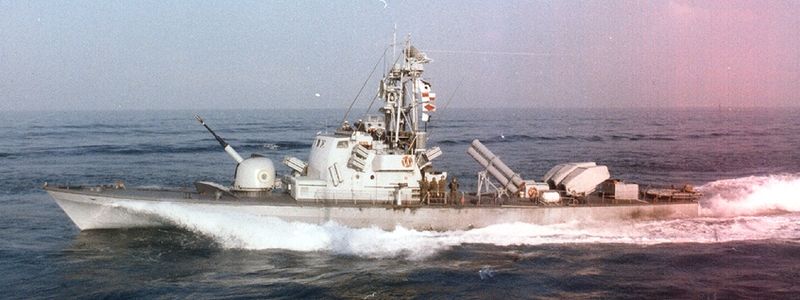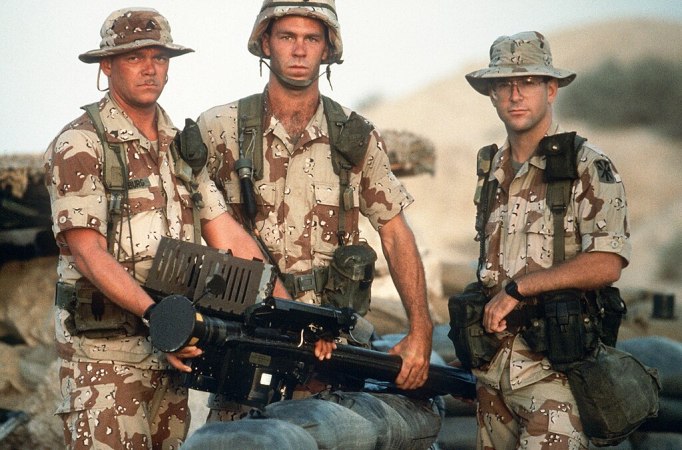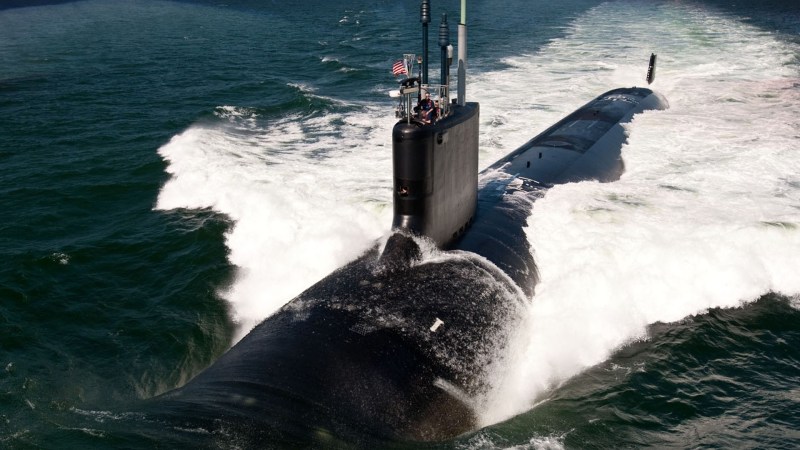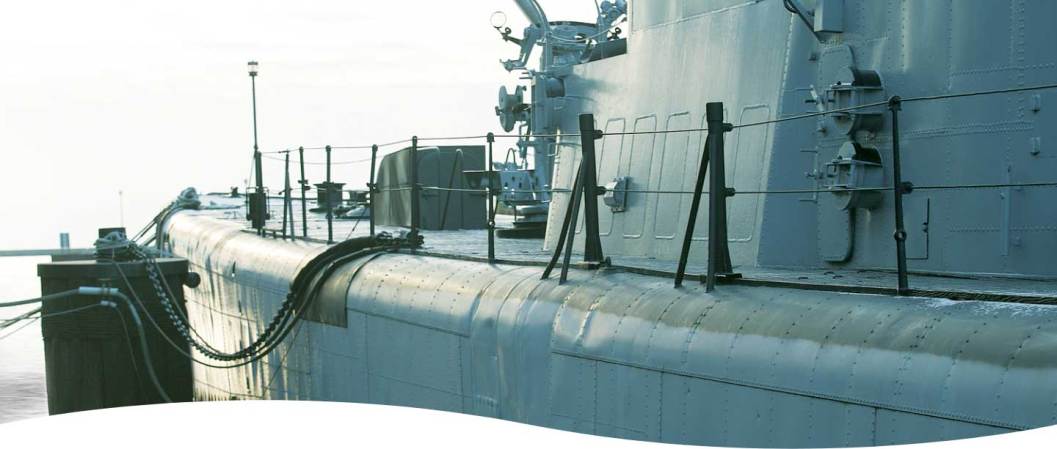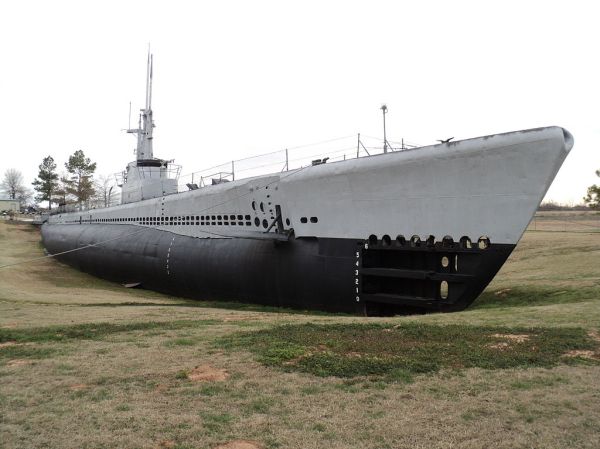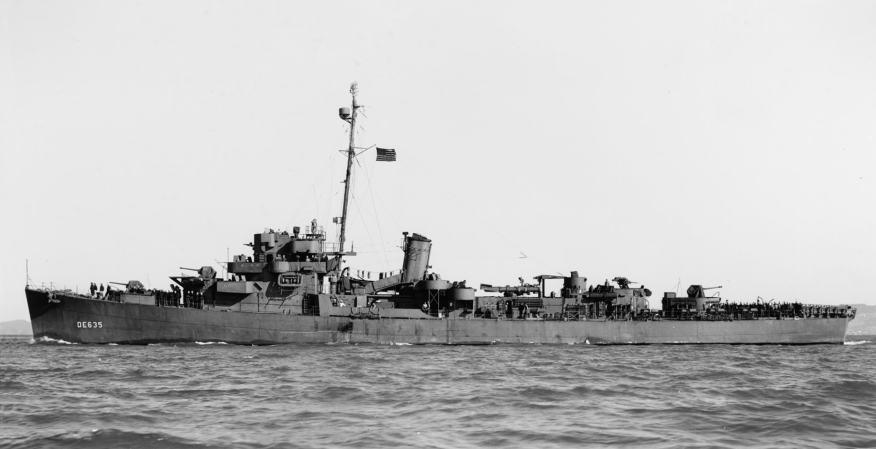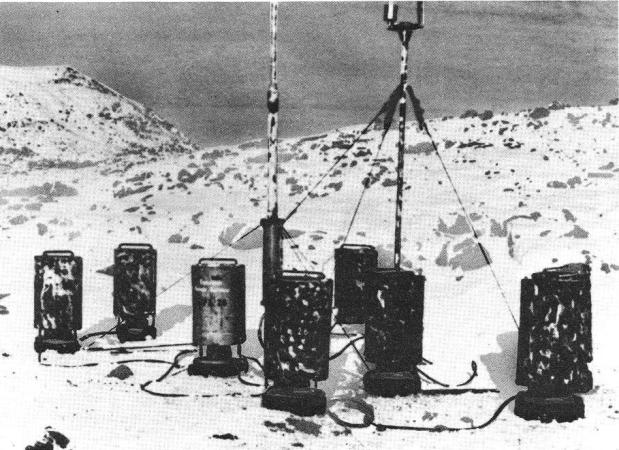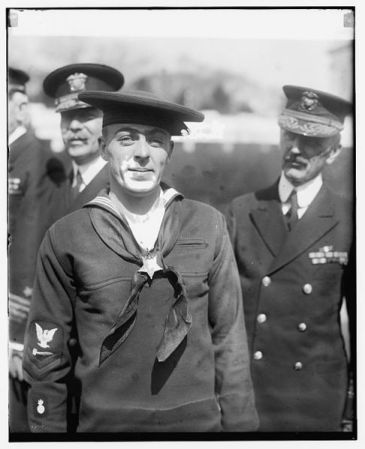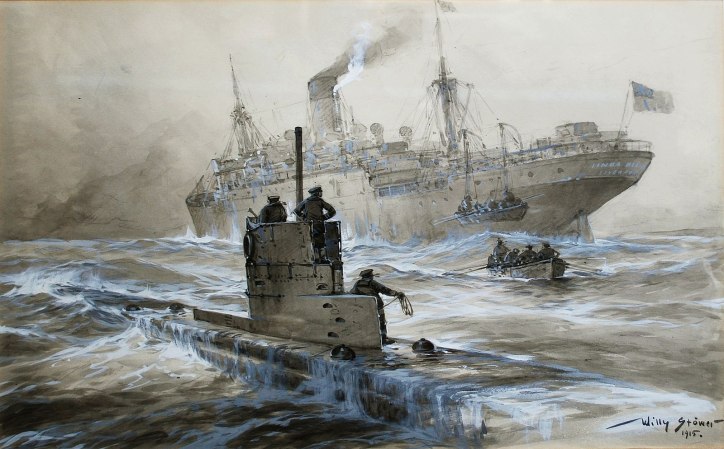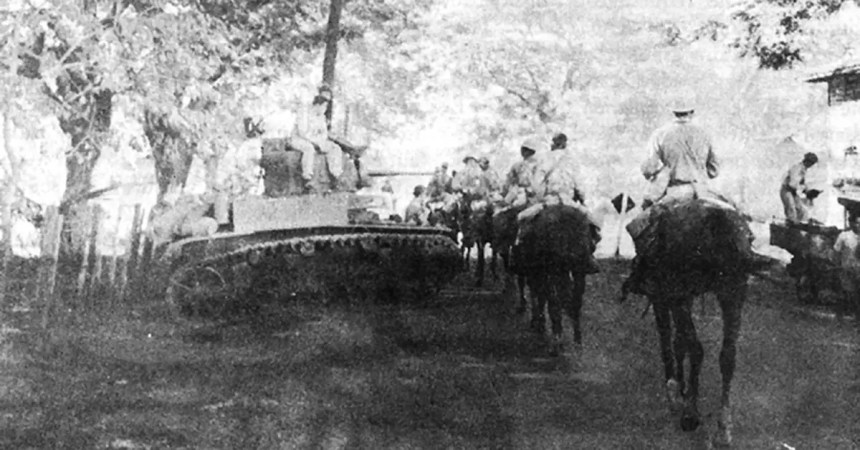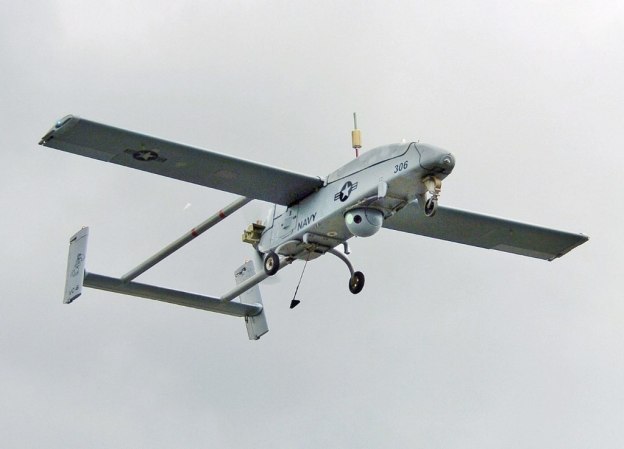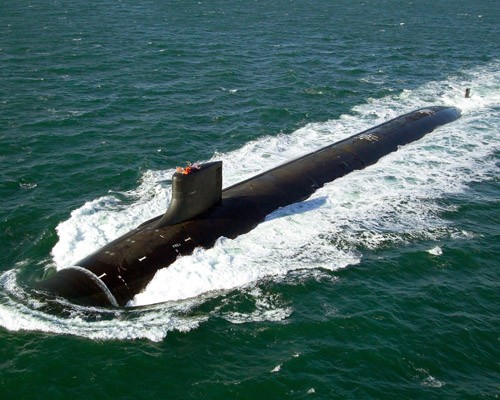The USS Pennsylvania has a regretful honor. The ship fought and took damage at Pearl Harbor and was the last major warship damaged in World War II. It survived bombings on December 7, 1941, and a torpedo strike on August 12, 1945. The Pennsylvania crew took part in every major Naval offensive in the Pacific and earned eight battle stars and the Navy Commendation Award during the war.
USS Pennsylvania at Pearl Harbor
The USS Pennsylvania took damage in the first American battle of the war. (As we’ve previously covered, though, it wasn’t the first American engagement of the war.) When the Japanese fighters and bombers flew into Pearl Harbor, seven battleships floated in the harbor, and one sat in dry dock. It was the Pennsylvania that sat in dry dock with the destroyers Cassin and Downes.
Japanese bombers hit the dry docks hard, triggering fires so intense that Cassin and Downes’ hulls twisted. But the more sturdily built Pennsylvania only took one bomb amidships and so was able to fight throughout the day.
The USS Pennsylvania crew helped in the anti-aircraft fight, provided damage control personnel to other ships, and helped fight fires in the dry docks. Because of its relatively light damage, the Pennsylvania pushed out to sea long before most casualties of Pearl Harbor, returning to training and then patrols in April 1942.

USS Pennsylvania in the Pacific
Pennsylvania served with Task Force 1 during the Battle of Midway but did not see combat. The Navy ordered it into port for a major overhaul before sending the ship to Alaska in April 1943 to help re-capture Alaskan islands from Japanese occupiers.
The Pennsylvania’s big guns bombarded Japanese positions onshore and supported troop landings at Attu and Kiska in the successful campaign. According to a Navy history, the ship then:
In November 1943, the USS Pennsylvania bombarded Makin during the amphibious assault on the Gilbert Islands. She repeated this role a few months later at Kwajalein and Eniwetok, and in June and July 1944 at Saipan, Tinian and Guam. Her guns supported landings in the Palaus in September 1944 and at Leyte in October.
USS Pennsylvania (BB-38, originally Battleship # 38), 1916-1948
During the landings at Leyte, the Japanese Navy attempted a crushing blow on the U.S. fleet in Operation Sho Go. This vain Japanese gambit pitted aging ships against the larger, modernized American fleet at Leyte Gulf. Fortunately for the Americans, U.S. submarines spotted one of the Japanese attack forces, radioed intelligence to the Pacific command, and then sank two cruisers.
When one of the larger Japanese forces reached the landings at Leyte Gulf, a line of six American battleships awaited them with surface radar that made them more accurate at longer ranges than their Japanese adversaries. Five of the battleships, including Pennsylvania, had survived Pearl Harbor, and they got their revenge at the Battle of Surigao Strait, pummeling the attempted Japanese surprise attack.
USS Pennsylvania landed two more blows to the Japanese in 1945, bombarding Santiago Island and Wake Island in support of operations there. But Japan had one more surprise for the Pennsylvania, as well. On August 12, 1945, the Pennsylvania floated at anchor and supported operations on Okinawa. A Japanese torpedo bomber managed to hide its approach and send a fish into the water against the battleship.
It hit, killing 20 crewmen and making the Pearl Harbor survivor the last major surface ship damaged by Japan ahead of its September 2 surrender in 1945.

USS Pennsylvania after the war
The Pennsylvania, originally launched in 1915, was now a veteran of two World Wars (though she saw no active combat in World War I) and 30 years old. The Navy prepared to drawdown its size after the war and made the decision not to fully repair the torpedo damage or overhaul the ship.
The USS Pennsylvania, instead, became a target ship for atomic bomb testing and was scuttled at sea in February 1948.
Two of her World War II guns were discovered in a gun barrel storage yard 50 years after the war. They now proudly sit outside of the Pennsylvania Military Museum.


